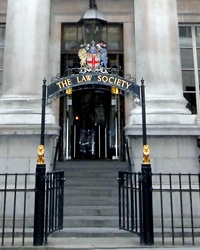The Law Society council will this week receive conflicting recommendations about the future representation of in-house lawyers and sole practitioners among its number.
While the society’s management wants to remove the seats currently allocated to the Commerce & Industry Group, Solicitors in Local Government and Solicitor Sole Practitioners Group, the influential council membership committee (CMC) says they should be retained.
As first reported on Legal Futures earlier this month, the dispute focuses on the society’s creation of new divisions covering in-house lawyers and small firms. The three groups –which were previously recognised by the society as the representative bodies for their sectors of the solicitors’ profession – have chosen, after lengthy negotiations, not to be absorbed by the divisions, but argue that they should still be represented on the council. Each has two seats at the moment.
The society’s management board will tell the council that all the groups were warned that not joining the divisions would have “implications” for their seats.
A paper going to the council says: “Maintaining the strategic objective that the Law Society should have a direct engagement with its members, it therefore seems appropriate for the divisions, as part of the Law Society’s mechanism for engaging with the profession, to fulfil the function of choosing who should represent members within the divisions on the council.”
However, the CMC says it was “unfortunate that the society’s thinking on the creation of the divisions, and the proposal that these should be the vehicle for electing council members” had not been included in the profession-wide consultation on council seats.
“The CMC also took the view that the creation of the divisions, and the consequences of this for some of the former recognised groups, were a source of potential disagreement within the profession which had not yet been wholly resolved.
“Concerns about this were exacerbated by the fact that the divisions did not yet have a formal governance structure – this would not be in place until after the society’s AGM on 11 July 2013 – and relying on them as a vehicle for making appointments to the society’s governing body did not appear appropriate.”
In any event, the CMC will tell the council that “specific representation” for groups is an “effective way of providing for their members to be represented on the council, and notes that such representation has existed on the council for many years.”
The issue will be resolved at Wednesday’s council meeting.















Leave a Comment